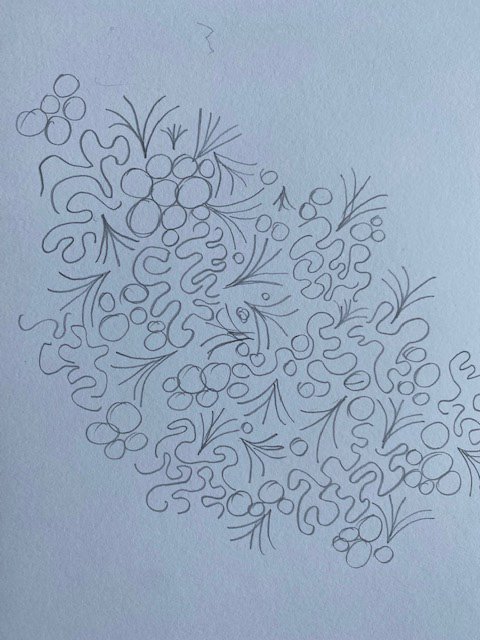Removable grounds have many uses, acting as a stabiliser while stitching or becoming part of the finished piece. I have started with dissolvable fabrics.
 |
| 6 |
I chose a hexagonal shapes as this relates to my theme of 'coral reefs'. Some coral skeletons are hexagonal. Using a range of free machine and hand stitching, in a varying densities, the sample is stitched with cocoon strippings and dissolvable fabric.
 |
| 7 |
The fish are back! Two layers of stitching on dissolvable fabric, layered with fish attached.
 |
| 8 |
Two layers of stitching on Romeo. The lower layer is made from 'rosettes' made by cutting a circle in a piece of fabric and machine stitching across the hole, then cutting the stitching away from the fabric. These rosettes were stitched together using free machine embroidery. The top layer is a series of rings stitched on soluble fabric.
 |
| 9 |
Cords, free machine and hand stitched, worked between Aquabond 2 and Romeo.
 |
| 10 |
Aquabond 2 layered with cocoon strippings, cling film and waxed honesty seed cases. Romeo placed over the top and machine stitched together.
 |
| 11 |
Variegated metallic thread stitched in a circular pattern on soluble fabric.
 |
| 12 |
Embellished felt cut into shapes. Lines of glue were applied to the join the shapes together and then painted white. The piece was turned over, as shown here. Simple but effective.
 |
13
Experiments with painted and rolled tyvek.
Top right - tubes randomly arranged and loosely stitched in place. Left - Tyvek 'fans' with small shells. Bottom - Tyvek tubes mimicking organ coral, soldered together. |
 |
| 14 |
Two layers of acrylic sheeting, painted with alcohol inks and cut with a soldering iron. Loosely stitched together to give an impression of rippling water.
 |
| 15 |
Coral skeleton shapes stitched on Thermagauze and burnt away with a heat gun.


























